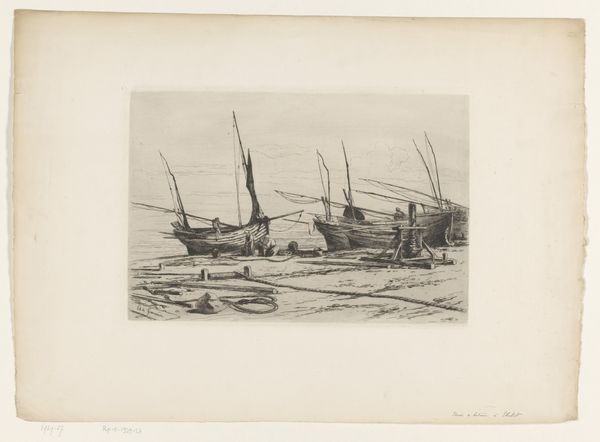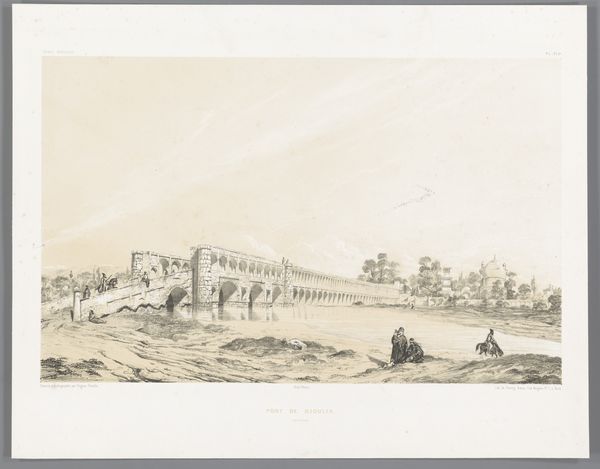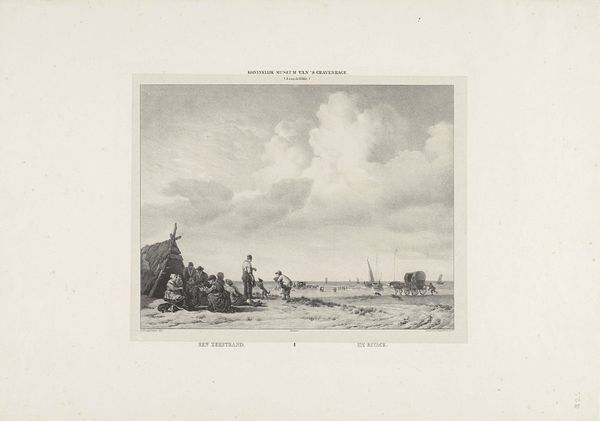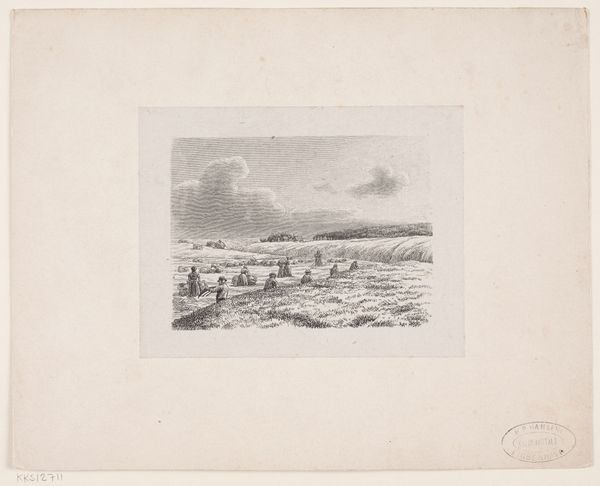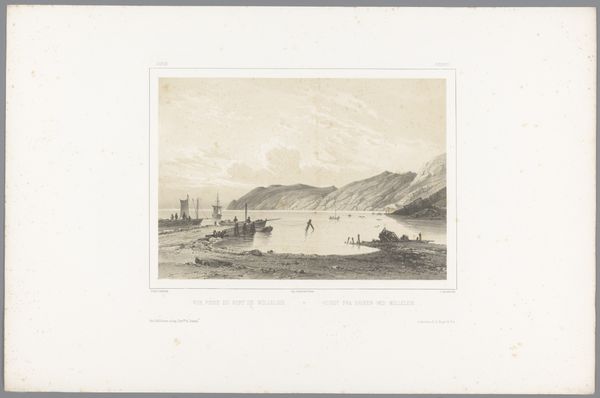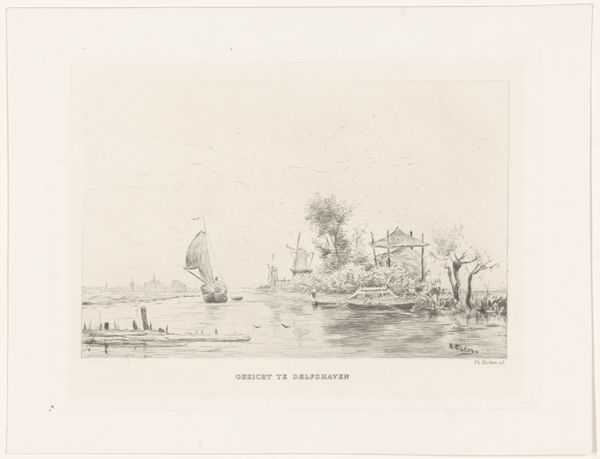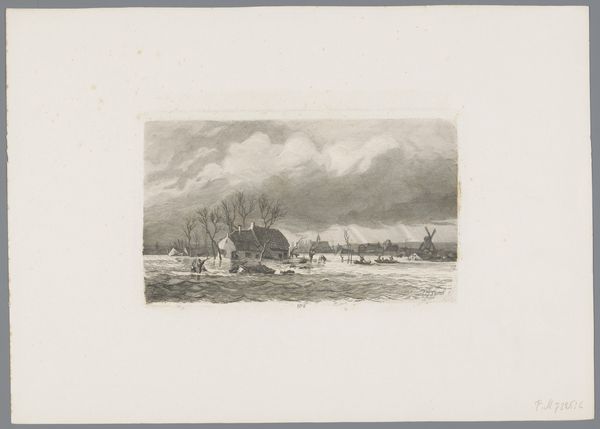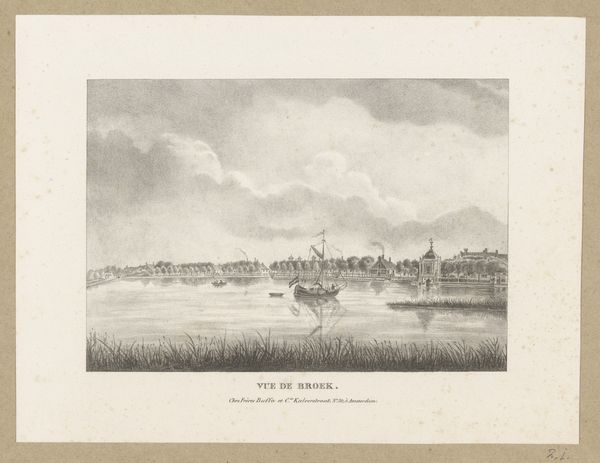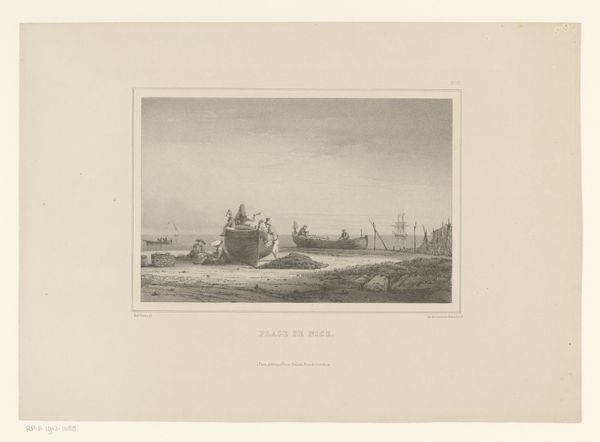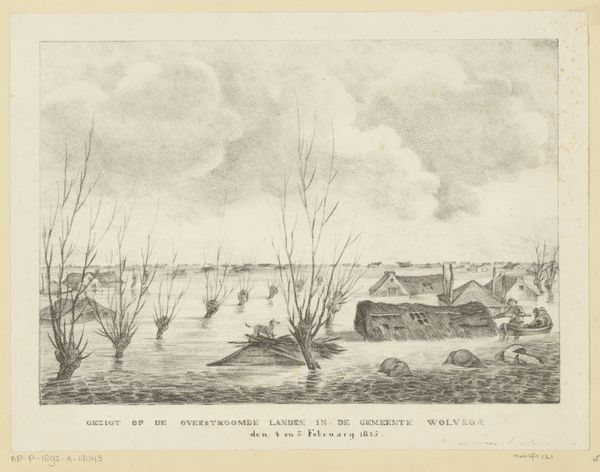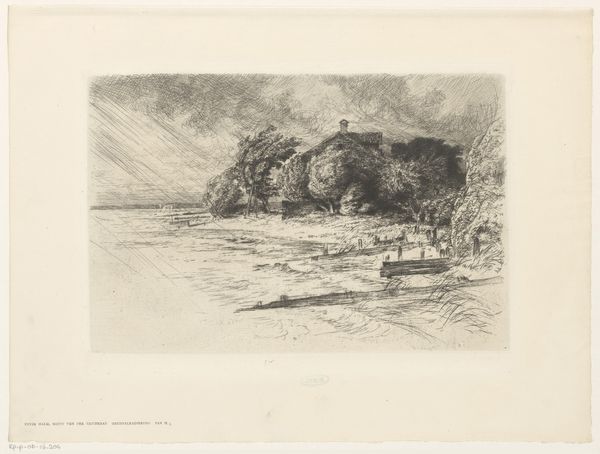
Guard Post for the Hungarian Military Colonies, Left Bank of the Danube, July 7, 1837 1838
0:00
0:00
drawing, lithograph, print, etching, paper
#
drawing
#
lithograph
# print
#
etching
#
landscape
#
paper
#
pencil drawing
#
genre-painting
#
history-painting
Dimensions: 156 × 330 mm (image); 156 × 330 mm (primary support); 341 × 457 mm (secondary support)
Copyright: Public Domain
Editor: Here we have Auguste Raffet's "Guard Post for the Hungarian Military Colonies, Left Bank of the Danube, July 7, 1837," a lithograph from 1838. The landscape and figures almost seem suspended in this still moment. It’s interesting how relaxed the soldiers appear given that they are at their "post". What jumps out at you? Curator: It's precisely that tension between "guard post" and leisurely rest that fascinates me. This print, appearing in 1838, depicts a scene from just a year prior. What does it tell us about the public image being cultivated of these colonies? We see a military presence, certainly, but also a degree of tranquility. Are we meant to view this as a peaceful assimilation of the Hungarian territories? Editor: So it's not necessarily a neutral observation. What about the placement of the figures in the landscape, do they hint at anything? Curator: Absolutely. The soldiers are not actively guarding; instead, their relaxation suggests a conquered territory subdued. The guard itself is almost concealed, blending into the reeds, a literal camouflage. It hints at a visual language of control and a careful negotiation of power. Are we seeing an objective account or a carefully constructed scene intended to promote the virtues of military colonization? Editor: It seems like Raffet is inviting us to question whose perspective is being represented here. The soldiers seem almost staged, and it does prompt me to question the larger social context of the Danube colonies. Curator: Exactly. And think about the intended audience of such prints at the time. They served a purpose beyond mere documentation. They fostered particular ideas about nationhood, expansion, and the role of the military in shaping geographical and political boundaries. It's a visual piece of political theater as much as it is a depiction of reality. Editor: I’m definitely looking at this piece with new eyes now. Thank you for bringing those social and historical layers to the surface. Curator: It’s crucial to remember art doesn’t exist in a vacuum. Exploring those connections unveils the silent dialogues artists are constantly having with the world around them, which continues to shape art’s social function today.
Comments
No comments
Be the first to comment and join the conversation on the ultimate creative platform.
